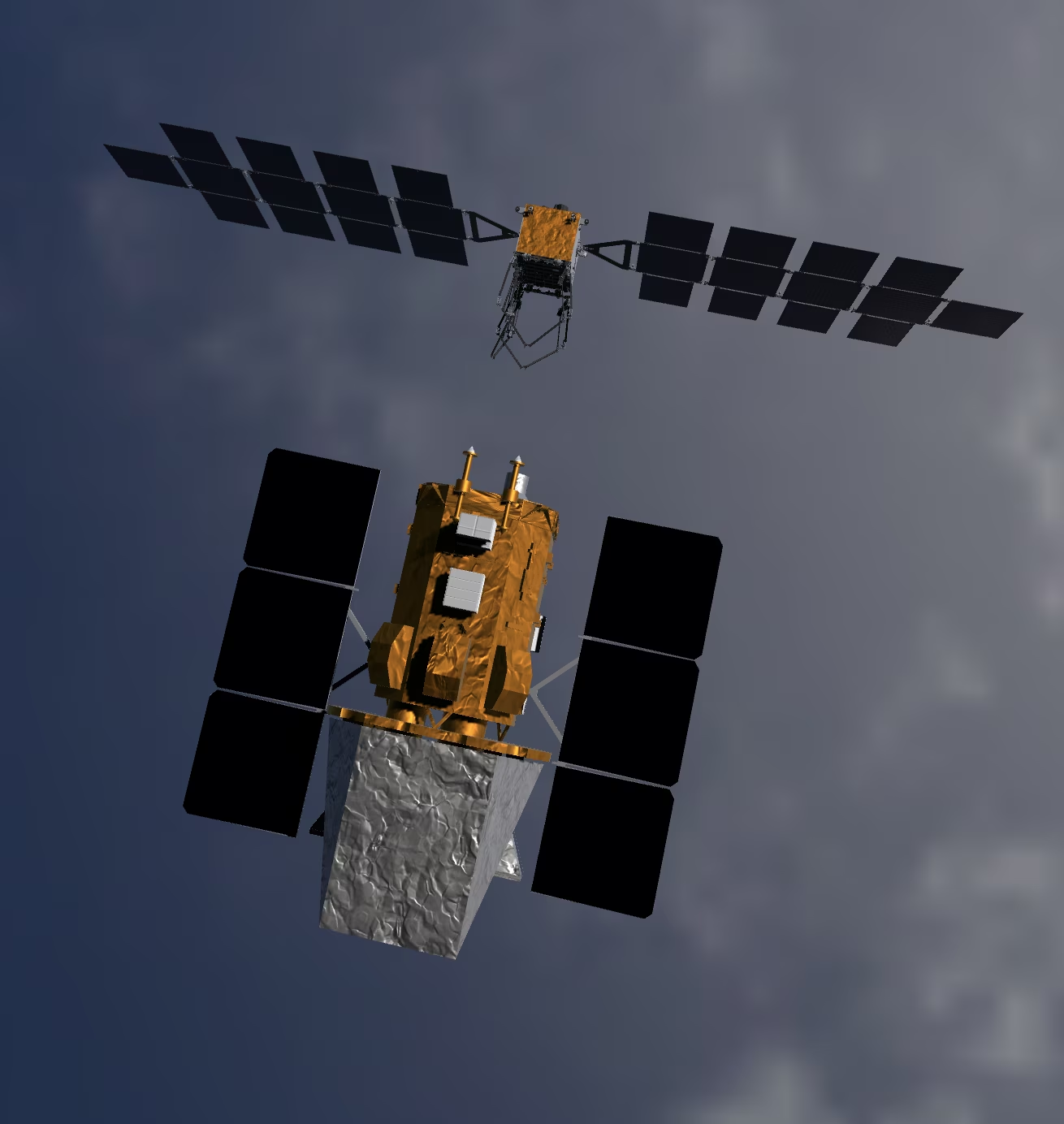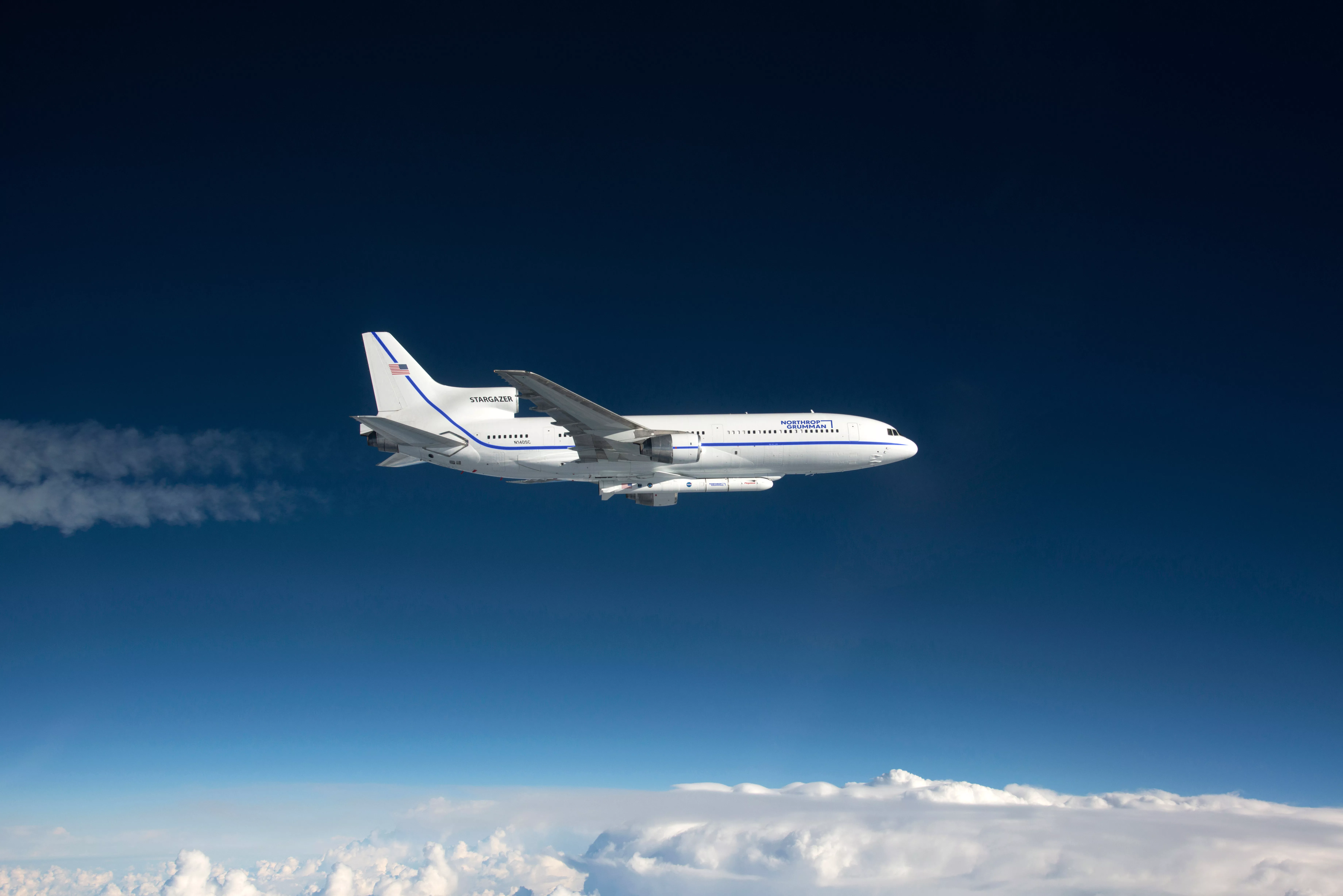Katalyst Space Technologies has selected Northrop Grumman’s Pegasus XL air-launched rocket to deliver its robotic spacecraft to orbit for Katalyst’s upcoming NASA Swift Rescue Mission. Katalyst is building a first-of-its-kind orbital servicing spacecraft to boost Swift’s orbit before it reenters, with launch scheduled for June 2026. The mission aims to reposition NASA’s long-lived Neil Gehrels Swift Observatory into a higher orbit to extend its scientific operations. Read more about the Swift Rescue Mission here.
A Race Against Time
Unlike typical launch campaigns that take up to 24 months, Katalyst has under eight months to get its LINK spacecraft on orbit to rescue Swift. Swift’s orbital decay demands an urgent mission, launching before atmospheric drag makes recovery impossible. Pegasus is the only system that can meet the orbit, timeline, and budget simultaneously.
The Challenge
Swift’s orbit at 20.6° inclination is difficult to reach from U.S. launch sites, where most small rockets are limited by launch site to inclinations above ~27°. Pegasus, carried aloft by Northrop Grumman’s L-1011 Stargazer aircraft and released midair at 39,000 feet, offers the flexibility to launch from virtually anywhere on Earth, making it one of the few viable systems capable of achieving Swift’s orbit on a highly compressed timeline.
“The versatility offered by Pegasus’ unique air-launch capability provides customers with a space launch solution that can be rapidly deployed anywhere on Earth to reach any orbit,” said Kurt Eberly, Director of Space Launch for Northrop Grumman. “The stringent mission requirements necessary to save the Swift observatory, including the unique low-inclination orbit and the tight mission timeline, all pointed to Pegasus being the perfect choice.”
Since its debut in 1990 as the world’s first privately developed orbital launch vehicle, Pegasus has flown 45 missions and maintained a perfect success record since 1996. It remains the only operational air-launched rocket capable of placing small spacecraft of up to 1,000 pounds into low Earth orbit.

Tactically Responsive Launch
This mission builds on Pegasus’ legacy of tactically responsive space operations, following its successful TACRL-2 launch for the U.S. Space Force in 2021. That effort demonstrated rapid call-up, integration, and launch readiness from a standby state. As an air-launched rocket fueled by highly reliable Northrop Grumman-built solid rocket motors, Pegasus has enormous flexibility in launch location, timing, and weather, ensuring the ability to deliver critical payloads to orbit on challenging schedules.
The Swift rescue mission represents the transition of tactically responsive launch from demonstrations into an operational imperative.
“Pegasus is the kind of uniquely capable launcher we need for this mission,” said Ghonhee Lee, CEO of Katalyst. “It’s the only launch vehicle that can meet the orbit, the schedule, and the cost to achieve something unprecedented with emerging technology.”
Katalyst’s selection of Pegasus underscores its ability to rapidly identify, qualify, and contract with critical vendors under extreme schedule pressure. This capacity for swift vendor engagement is essential to achieving tactically responsive space operations, where mission success depends on speed, precision, and partnership agility.
A Model for Future Missions
The collaboration between Katalyst Space Technologies and Northrop Grumman offers a blueprint for government and commercial missions that must execute complex, time-critical orbital operations. The Swift rescue will preserve a world-class scientific asset while proving that the U.S. can conduct rapid-response space missions at an accelerated speed.


